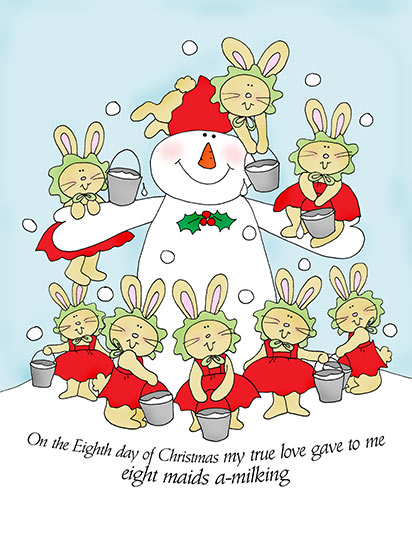On the eighth day of Christmas... Milking it: who benefits?

Wed, 09 Dec 2015 11:21:00 GMT
The traditional story book image of milk maids sitting on three legged stools, faces pressed against the warmth of cows’ flanks is sadly out dated. The cows have numbers not names and milk is pumped out of their udders in highly mechanised and industrialised milking parlors. The average UK herd is still relatively small, with an average of 125 cows grazed outside in the spring and summer, and kept inside in barns during the winter. But things are changing in the dairy industry, and soon the sight of black and white cows at pasture may join the bucolic milk maids - consigned to fairy tales and agricultural history.
Ten years ago there were 35,000 dairy farms in the UK, but by 2014 this had fallen to 13,265. The farmers have been squeezed out by a market which has required them to sell their milk at less than it costs to produce it. Much of the blame for this has been placed on supermarkets which have been engaging in a milk price war, slashing prices so that it has been possible to buy four litres of milk for a pound. But it is not just the supermarkets which have caused this crisis. We import dairy products worth £1.3 billion each year – and this also generates greater competition for our home producers.
These economics have led to a reconsideration of how milk is produced and the past ten years has witnessed the emergence of ‘mega dairies’. In the USA these can host up to 30,000 cows, all kept indoors and fed scientifically calculated food rations. In the UK there are 70 super dairies with the capacity for up to 8,000 cows - we know ‘times are a changing’ when issues are incorporated in The Archers http://ponderingthearchers.blogspot.co.uk/2012/04/super-dairy-goes-before-planning-170412.html!
While the idea of what some protesters have called ‘battery cows’ might feel ethically uncomfortable, what has this got to do with climate change? The dairy sector accounts for 4% of the world total greenhouse gas emissions and in what was probably uncomfortable reading for the traditionalists, the UN Food and Agricultural Organisation found that emissions per pint were lower in intensive dairy production. However, this has been challenged by the Food Climate Research Network who claim that the shorter lives of intensively farmed cows (compared to their more free living cousins), mean that the emission costs of raising new cows more than makes up for their lower levels of milk production efficiency.
If we are thinking about life cycle analysis of milk production, we might also want to think about the journey it makes to get in our fridge. Most of us buy it from supermarkets or local shops and sadly the early morning rattle of a milkman on his rounds is nearly as rare as a milkmaid. But if you were around in the UK in the 1970’s and want to be reminded of what we are missing, you are only a click away - https://www.youtube.com/watch?v=8e1xvyTdBZI.







